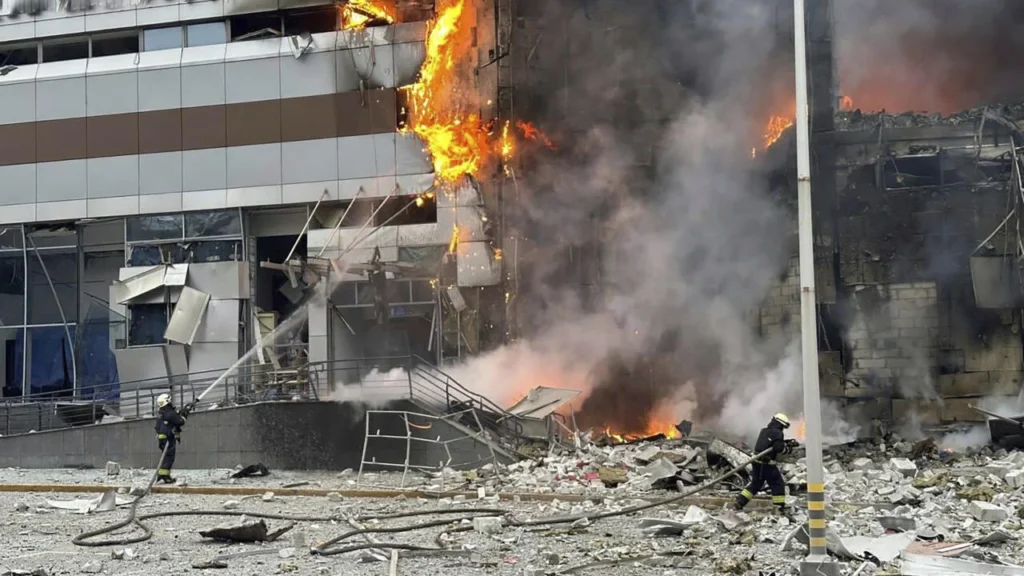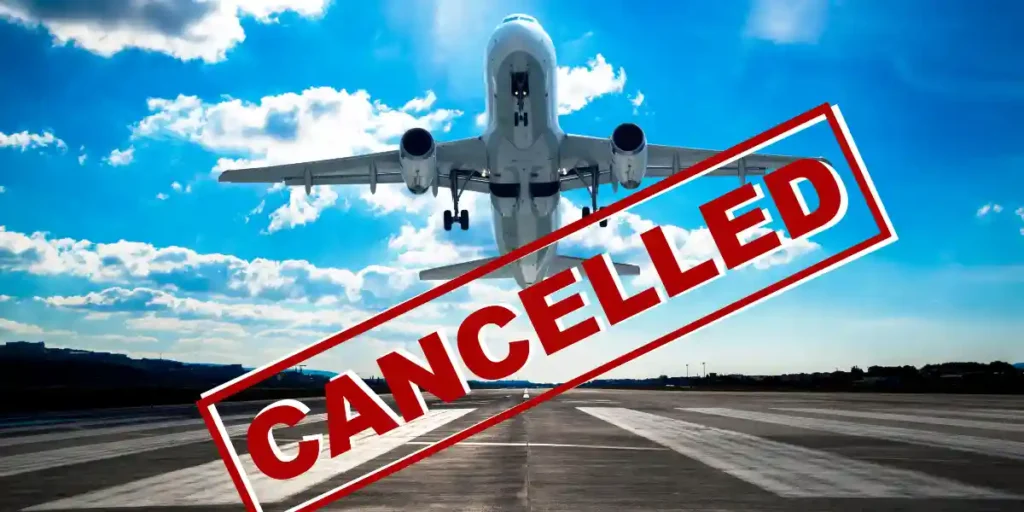Ukraine Hit By Heavy Bombardment in Russia’s Largest Air Attack

In a significant escalation of the ongoing war, Russia has struck “one of the biggest” aerial assaults on Ukraine, targeting critical energy infrastructure and civilian areas.
The heavy shelling occurred during early morning and resulted in blackouts in some parts of the nation and several provinces had to switch off electricity supplies. Ukraine Foreign Minister Andrii Sybiga called the attack a targeted act of aggression at civilians and critical infrastructure.
“Russia launched one of the largest air attacks: drones and missiles to kill innocent people and destroy our cities, homes, families, and businesses,” Sybiga said after the aggression.
The attacks resonated in the capital of Kyiv and other cities; people were frightened, and the authorities had to estimate the scale of the problem..
Targeting Ukraine’s Energy Station
These attacks were clearly directed at disrupting the Ukrainian energy systems especially as the winter months approach. Kyiv and other Ukrainian cities had been expecting a massive attack that could destabilise and blackout the entire power system of the country for weeks. The threat of long-term blackouts and low temperatures pushed the country to get prepared for such an attack.
German Galushchenko, Energy Minister of Ukraine, posted on the social network that the Russian missiles targeted the objects of electricity generation and transmission. “Another massive attack on the power system is under way,” Galushchenko wrote, emphasising the enemy’s focus on disabling the nation’s energy infrastructure.
In order to avoid further subsequent overloading, blackout has been made by switching off electricity supply in Kyiv, and two other eastern regions. Though such a proactive strategy was useful, it meant that huge segments of people had no power when they woke up to a chilly winter morning.
The systematic attack on the power installations directs at bringing down Ukraine and demonstrates the misuse of energy as a weapon by Russia. The strikes led to blackouts in several districts of the city, while the authorities of the Volyn region reported destruction of energy facilities. However, as a result of security considerations, specific information on the degree of damages was kept secret.
Large-Scaled Destruction Across Ukraine
Security sources said the attack’s impact was also felt in other cities across Ukraine, as there were reported blasts. The regional governor said that two people died in the course of an airstrike that took place early in the night in Mykolaiv, a southern city. Serhiy Haidai, the head of the Luhansk regional administration, said that almost all cities and towns in the region had been attacked, including Zaporizhzhia in the southeast and the Black Sea port of Odesa.

Image Source: France 24
Other areas of Ukraine, Kyiv’s southern city of Kryvyi Rih and the western town of Rivne also said they were subjected to attacks, which only amplified the severity of the invasion. Sounds of air raid warnings persisted all night as air defence scrambles to shoot down incoming drones over Kyiv. People mentioned that the sound of explosions, as well as the effect of power outages which preceded the shelling, scared them.
Although the exact level of destruction is yet to be ascertained, on the psychological front it may have had its impact on the civilians. This deliberate act falls in the strategy to terrorise people and bring their normalcy into a halt especially given that the attack is at a period when the country is experiencing extremely cold weather.
Russia’s Motive and Global Reactions
Foreign Minister Sybiga connected the attack to recent meetings of heads of Ukrainian state and the Russian President Vladimir Putin. He called the strike Moscow’s “true response” to diplomatic engagements, indirectly referring to a phone conversation between German Chancellor Olaf Scholz and Putin.
This massive strike demonstrates that Russia plans to use the winter as its primary weapon. Through attacks on energy systems, Moscow wants to disarm Ukraine in terms of its capacity to continue fighting back and put pressure on both its military personnel and civilians.
The attack also received global responses. Poland, which neighbours Ukraine and belongs to NATO, was forced to mobilise its air force in the process. The Polish officials also confirmed that the strike that hit the country was done with the help of cruise missiles, ballistic missiles, and drones at once because of the complexity and scale of the attack.
The escalation has even intensified tensions in that region with NATO members supporting Ukraine in their fight against aggression from Russia.
Psychological and Physical Effect on Ukraine
These strikes have aggravated the suffering of the Ukrainian population that had been struggling for months owing to the conflict. By its operations the Russian intelligence seeks to destroy energy infrastructure in order to paralyse fundamental needs like heat supply, communication and water provision.
The consequences have included loss of power throughout the day rendering the citizens helpless especially the rural population whose sources of electricity are so scarce.
The psychological effects are also equally bad. Lack of safety from constant threat of airstrike, the cold as well as darkness increase the level of fear among the individuals. This is exactly what Moscow wants, as Russia attempts to sap Ukrainian willpower during what is arguably the most important period of the conflict.
Nevertheless, Ukrainian resistance is still high. People and authorities are actively involved in the rehabilitation and stabilisation processes after the disaster, as well as to encourage everyone. The willingness to stand together and fight supercharges hope and remains undiminished by aggression on all sides.
Ukraine’s Response And The Future Ahead
According to the energy officials, rebuilding the power infrastructure and restoring the power in the areas that have been attacked is now the main concern.
Military personnel are also pushing up their defences to avoid any further attacks on vital structures. These efforts are accompanied by assistance from international organisations and technical assistance from affiliate countries.
Altogether, one has to emphasise that the situation in Ukraine is severe, but it has the potential to cope with it. Some efforts from the government including premature load shedding have also helped to curb situations like spikes and ensure that the integrity of the grid has been maintained in some parts.
Ukraine remains receiving support from NATO and other allies by sending assistance and criticising Russia actively. This backing is important even as the nation continues to fight one of the most serious escalations of the conflict.
Conclusion
The most recent aerial attack by Russia on Ukraine is one of the most comprehensive and deliberate since the war. It means that Moscow directly attacks energy infrastructures in Ukraine during the worst months of the year to undermine its defences and exert psychological pressure on its people.
Nonetheless, Ukraine has not lost her resolve. This ability to rise out of the ashes and to defend itself against aggression is proof positive of the nation’s strength of spirit. In solidarity with Ukraine, support is clearly needed and appreciated by the international community more than ever before.
Frequently Asked Questions
What was the primary target of Russia’s aerial assault on Ukraine?
Russia’s attack targeted Ukraine’s critical energy infrastructure and civilian areas, aiming to cause widespread blackouts during harsh winter conditions.
How did the attacks impact Ukraine’s energy system?
The strikes disrupted electricity generation and transmission, leading to blackouts in Kyiv and other regions as authorities implemented power cuts to prevent grid overload.
Which cities in Ukraine were affected by the attack?
Major cities like Kyiv, Mykolaiv, Zaporizhzhia, Odesa, Kryvyi Rih, and Rivne experienced blasts, with widespread blackouts and casualties reported.
What are the psychological effects of the attacks on Ukrainian civilians?
The strikes have instilled fear among civilians, with ongoing threats of airstrikes, cold temperatures, and darkness exacerbating anxiety and distress.
How is Ukraine responding to these attacks?
Ukraine is focused on restoring energy infrastructure, enhancing military defences, and rallying international support to counteract the ongoing aggression.
LATEST NEWS
DISCOVER MORE






